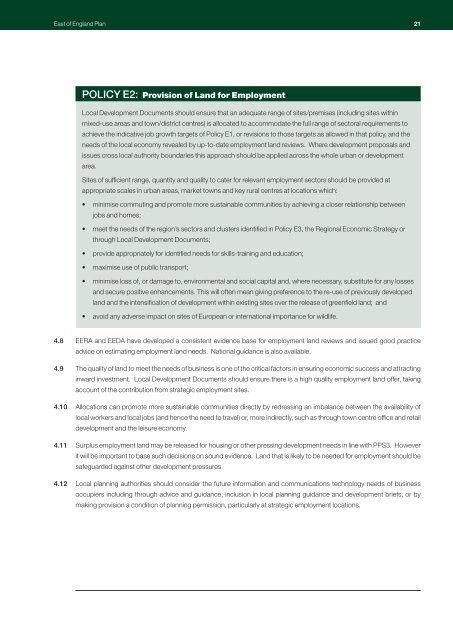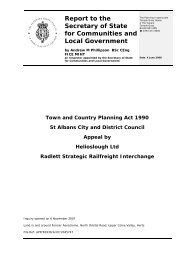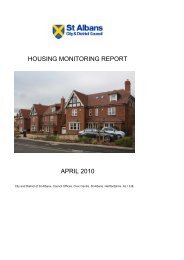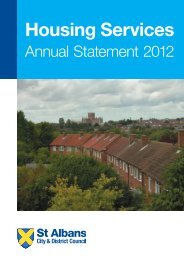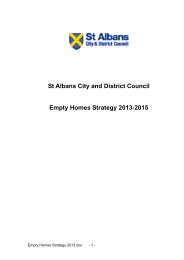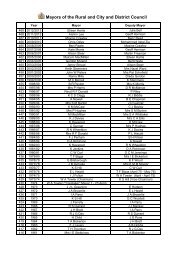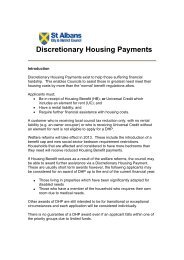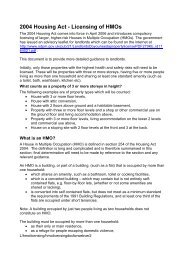RSS East Of England Plan - Broads Authority
RSS East Of England Plan - Broads Authority
RSS East Of England Plan - Broads Authority
Create successful ePaper yourself
Turn your PDF publications into a flip-book with our unique Google optimized e-Paper software.
<strong>East</strong> of <strong>England</strong> <strong>Plan</strong> 21<br />
POLICY E2: Provision of Land for Employment<br />
Local Development Documents should ensure that an adequate range of sites/premises (including sites within<br />
mixed-use areas and town/district centres) is allocated to accommodate the full range of sectoral requirements to<br />
achieve the indicative job growth targets of Policy E1, or revisions to those targets as allowed in that policy, and the<br />
needs of the local economy revealed by up-to-date employment land reviews. Where development proposals and<br />
issues cross local authority boundaries this approach should be applied across the whole urban or development<br />
area.<br />
Sites of sufficient range, quantity and quality to cater for relevant employment sectors should be provided at<br />
appropriate scales in urban areas, market towns and key rural centres at locations which:<br />
• minimise commuting and promote more sustainable communities by achieving a closer relationship between<br />
jobs and homes;<br />
• meet the needs of the region’s sectors and clusters identified in Policy E3, the Regional Economic Strategy or<br />
through Local Development Documents;<br />
• provide appropriately for identified needs for skills-training and education;<br />
• maximise use of public transport;<br />
• minimise loss of, or damage to, environmental and social capital and, where necessary, substitute for any losses<br />
and secure positive enhancements. This will often mean giving preference to the re-use of previously developed<br />
land and the intensification of development within existing sites over the release of greenfield land; and<br />
• avoid any adverse impact on sites of European or international importance for wildlife.<br />
4.8 EERA and EEDA have developed a consistent evidence base for employment land reviews and issued good practice<br />
advice on estimating employment land needs. National guidance is also available.<br />
4.9 The quality of land to meet the needs of business is one of the critical factors in ensuring economic success and attracting<br />
inward investment. Local Development Documents should ensure there is a high quality employment land offer, taking<br />
account of the contribution from strategic employment sites.<br />
4.10 Allocations can promote more sustainable communities directly by redressing an imbalance between the availability of<br />
local workers and local jobs (and hence the need to travel) or, more indirectly, such as through town centre office and retail<br />
development and the leisure economy.<br />
4.11 Surplus employment land may be released for housing or other pressing development needs in line with PPS3. However<br />
it will be important to base such decisions on sound evidence. Land that is likely to be needed for employment should be<br />
safeguarded against other development pressures.<br />
4.12 Local planning authorities should consider the future information and communications technology needs of business<br />
occupiers including through advice and guidance, inclusion in local planning guidance and development briefs, or by<br />
making provision a condition of planning permission, particularly at strategic employment locations.


